Apple on Tuesday was granted a patent outlining the basic idea and functionality of Time Machine, the backup storage feature that has been included in the company's Mac operating system since it was introduced with Mac OS X 10.5 Leopard in 2007.
Titled "Consistent back up of electronic information," Apple's U.S. Patent No. 8,311,988 covers the fundamental idea and methodology of saving data as it changes and restoring said data in a reliable manner.
First filed for in August 2006, the patent notes the problem of revising edited material. It gives the example of a text editing program, which allows users to "undo" edits back to a predetermined number of revisions only in reverse chronological order. Furthermore, once the word processor is closed and the data is saved, most programs don't allow users to "undo" previous edits.
With the '988 patent, Apple describes an auto-save method that performs backup operations in the background, with the system monitoring changes made by the user one or more times to ensure that all data modifications are stored.
From the patent summary:
An algorithm or other monitoring can be used to detect changes that occur during the backup operation in order to maintain consistency between related data in the backup. The back up can be performed again for related data that was modified during prior backup operation.Flowchart of system engines and functions.In general, in one aspect, a method is provided. A backup operation of data including a plurality of related items is initiated. Modifications to one or more items of the plurality of related items are monitored for during the backup operation. The backup operation is completed. If a modification occurred to one or more items, a second backup operation is performed for the modified items.
To function, the property calls for a backup component that archives different items or elements like files, folders, directories, system parameters and more on a local or external storage device like the Time Capsule Apple unveiled in 2008. In one implementation, no local storage is provided, hinting that the archived data may one day be stored in the cloud.
The system works by saving both a copy and the original file, folder or other digital asset. An activity monitoring engine can then determine when a modification is made to a monitored file and trigger a backup sequence. Subsequent saved copies will only contain the differences found in respect to the original data to conserve disk space. In some cases, the monitoring engine can watch for periods of inactivity, at which time a backup can be initiated to prevent system slowdowns for an active user.
A preference management engine is employed to customize the backup parameters, such as where the saved data is stored, how long Time Machine should run and what triggers a backup event.
Perhaps most critical is the change identifying engine, which looks for modifications made to a specific data set. The engine "can be capable of discerning a substantive change from a non-substantive change," like the loss of data from a user's current view.
Finally, the backup restoration engine is used to restore previous versions of "views," or archived data. The Time Machine UI is provided for in one embodiment of the restoration engine.
Sample Time Machine user interface showing the backup options menu.The patent goes on to explain in detail the inner workings of how a piece of data is deemed significant enough to save, as well as the "screenshot" view seen in the Time Machine's UI from which users can select past versions of certain data sets.
Interestingly, while the Time Machine moniker was not yet introduced to the public at the time of the patent's filing, the invention does use the term "time machine" when it refers to the consistent backup system.
In April, Apple won another Time Machine patent associated with the system's user interface.
 Mikey Campbell
Mikey Campbell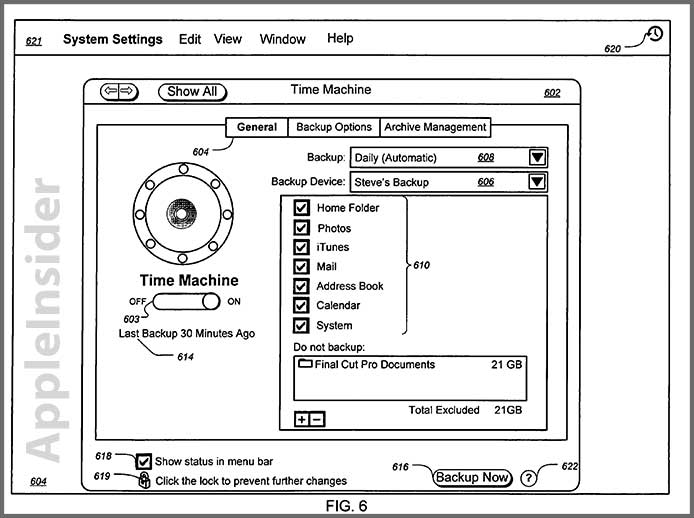







-m.jpg)





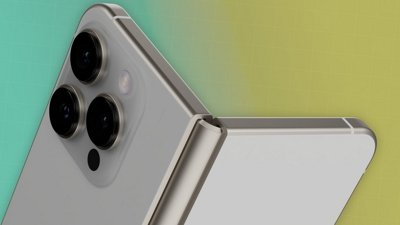
 Malcolm Owen
Malcolm Owen

 Amber Neely
Amber Neely
 Christine McKee
Christine McKee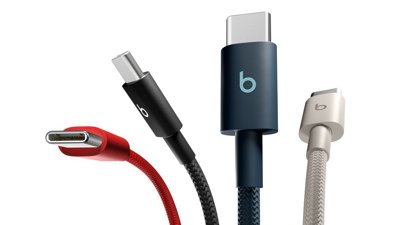
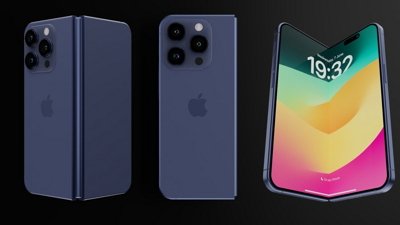
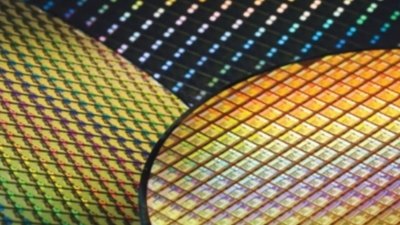
 William Gallagher
William Gallagher
 Chip Loder
Chip Loder


-m.jpg)






12 Comments
10.5 is Leopard 10.6 is Snow Leopard
Time Machine is probably my favourite feature in the whole of OSX. It's never intrusive and works flawlessly. It's also unique to OSX.
It is hard to believe that the incremental improvements made to SnapBack (which itself is just a script to simplify rsync + symlinks) are patent-worthy. It is a great feature... Just not something that isn't "obvious to someone skilled in the field."
@aarrrgggh I could not agree more. The patent office needs a major overhaul. There is nothing new about this work.
@aarrrgggh I could not agree more. The patent office needs a major overhaul. There is nothing new about this work.
You waited four years to post something utterly irrelevant?